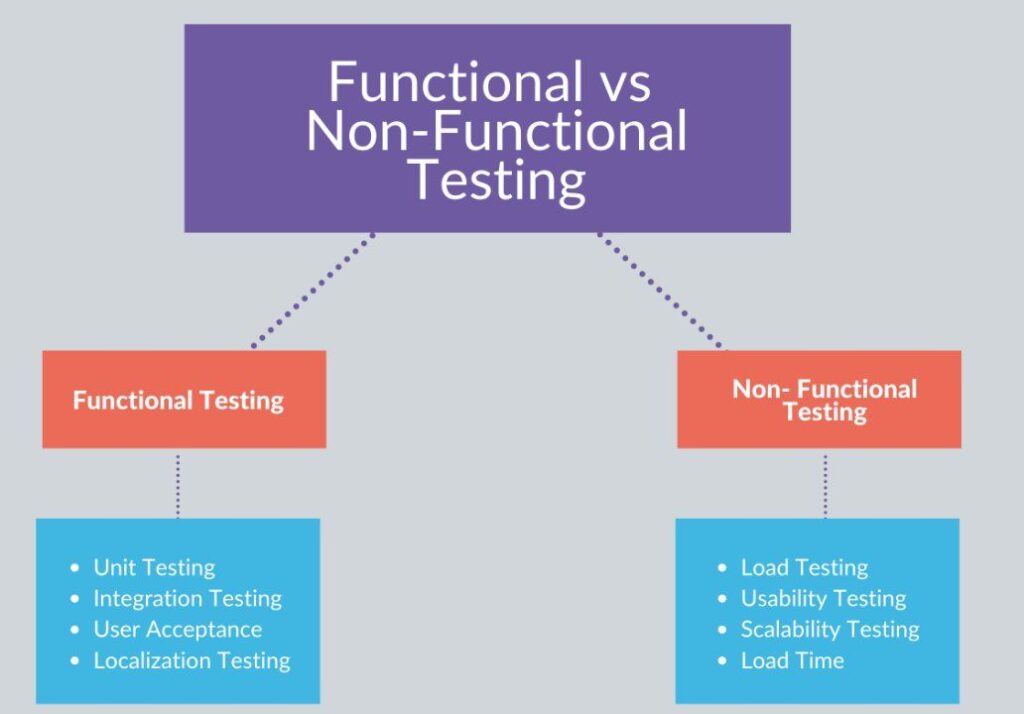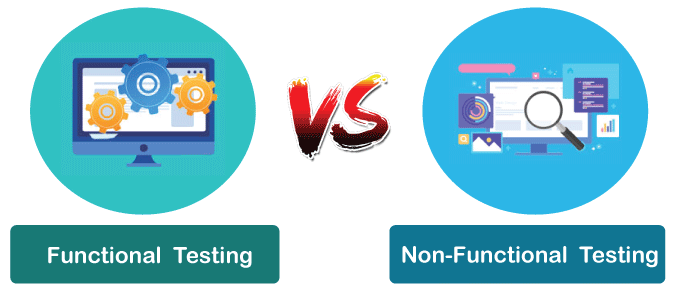In software development, ensuring the quality and reliability of applications is paramount. This is achieved through rigorous testing processes, which are broadly categorized into functional and non functional testing. Both are essential for delivering a robust software product, but they focus on different aspects of the application. Let’s delve into the distinctions between functional and non functional testing, their significance, and their implementation.
Functional Testing
Functional testing is concerned with verifying that the software behaves as expected. It focuses on the business requirements and ensures that all functionalities of the application work according to the specified criteria.
Key Characteristics of Functional Testing:
- Objective: To ensure the application performs its intended functions correctly.
- Basis: Based on the requirements specification document, user stories, or use cases.
- Scope: Includes testing of user interfaces, APIs, databases, security features, and overall functionality.
- Types of Functional Testing:
- Unit Testing: Testing individual components or modules.
- Integration Testing: Ensuring that different modules or services work together.
- System Testing: Testing the complete and integrated software.
- Acceptance Testing: Verifying the system’s compliance with business requirements and end-user needs.
Examples of Functional Testing:
- Login Functionality: Verifying that users can log in with valid credentials and are denied access with invalid credentials.
- Form Validation: Ensuring that all required fields are filled out correctly and appropriate error messages are displayed when they are not.
- Transaction Processing: Checking that financial transactions are processed accurately and reflect in the user’s account.
Techniques Used:
- Black Box Testing: Testing without looking at the internal code structure, focusing solely on inputs and expected outputs.
- Manual Testing: Performing tests manually by testers.
- Automated Testing: Using scripts and tools to execute tests (e.g., Selenium, JUnit).
Non-Functional Testing
Non-functional testing, on the other hand, focuses on the quality attributes of the software, often referred to as the “ilities”. It evaluates aspects like performance, usability, reliability, and security.
Key Characteristics of Non-Functional Testing:
- Objective: To ensure the application meets certain performance criteria and is user-friendly, secure, and reliable.
- Basis: Based on quality attributes, performance benchmarks, and regulatory standards.
- Scope: Includes performance testing, load testing, stress testing, usability testing, and security testing.
- Types of Non-Functional Testing:
- Performance Testing: Assessing the speed, responsiveness, and stability under a particular workload.
- Load Testing: Determining the application’s behavior under expected user loads.
- Stress Testing: Evaluating the application’s robustness under extreme conditions.
- Usability Testing: Ensuring the application is easy to use and intuitive.
- Security Testing: Identifying vulnerabilities and ensuring data protection.
Examples of Non-Functional Testing:
- Response Time: Measuring how quickly the application responds to user actions.
- Scalability: Evaluating how the application handles increasing loads.
- User Experience: Testing the application’s interface for ease of use and satisfaction.
- Security Vulnerability: Checking for vulnerabilities that could be exploited by hackers.
Techniques Used:
- White Box Testing: Involves knowledge of the internal workings of the application.
- Performance Testing Tools: Tools like JMeter, LoadRunner.
- Security Testing Tools: Tools like OWASP ZAP, Burp Suite.

Importance of Both Testing Types
Both functional and non functional testing are crucial for the successful delivery of a software product. Functional testing ensures that the application does what it is supposed to do, which is essential for user satisfaction and meeting business requirements. Non functional testing ensures that the application performs well under various conditions, is user friendly, and secure, which is critical for user retention and trust.
Enozom is a leading software development company renowned for delivering high-quality software solutions tailored to meet specific client needs. A critical aspect of Enozom’s quality assurance process involves rigorous functional and non-functional testing. Functional testing at Enozom ensures that every feature of the software aligns with the specified requirements, validating functionalities like user authentication, data processing, and integrations. Complementarily, non-functional testing assesses the software’s performance, scalability, usability, and security, ensuring it operates efficiently under various conditions and provides a seamless user experience. Through these comprehensive testing strategies, Enozom guarantees robust, reliable, and user-friendly software products.
Conclusion
Functional and non functional testing serve different but complementary purposes in the software development lifecycle. Functional testing verifies that the software functions correctly according to requirements, while non-functional testing ensures that the software performs well in terms of speed, scalability, usability, and security. Both are essential for delivering high quality software that meets user expectations and business goals.
Understanding and effectively implementing both types of testing can significantly enhance the reliability, performance, and user experience of the software, ultimately leading to a more successful and competitive product.
